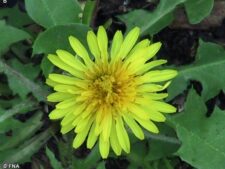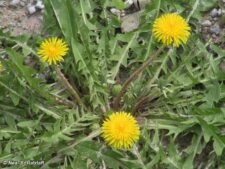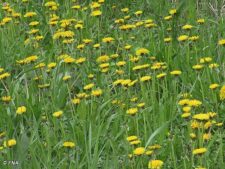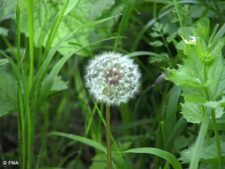
DANDELION
Taraxacum officinale
SUNFLOWER FAMILY (Asteraceae)
 Identification
Identification
- Flowering time - March, April, May, June, July, August, September, October, November
- Common in disturbed areas at both FF and NW
- Round, bright yellow flower on a long stalk
- Rosette of deeply toothed leaves at base of stem
- Fluffy, globe-shaped seed heads
A native of Eurasia, this common lawn weed is now naturalized in temperate zones world-wide. The hollow stalk, often 15 inches or more tall, contains a milky sap and bears a bright yellow flower head with numerous strap-like ray florets (A,B). The leaves have deep and irregular teeth (A,C). The seeds with “parachutes” are arranged in a spherical head (E).
Common in fields, roadsides and trails at both Fontenelle Forest and Neale Woods. This plant blooms most profusely in the spring and summer months, but flowering may occur during all months of the growing season from March through November.
The leaves and flowers are rich in vitamins A and C; they were eaten as a salad or cooked like spinach by settlers from Europe, and recently they have become available in some super markets.
Unlike many members of the sunflower family which have showy outer ‘ray’ florets surrounding a center composed of inconspicuous ‘disk’ florets, Dandelion has only strap-like bright yellow ray florets.
The content of NatureSearch is provided by dedicated volunteer Naturalists of Fontenelle Forest who strive to provide the most accurate information available. Contributors of the images retain their copyrights. The point of contact for this page is: Roland Barth.




